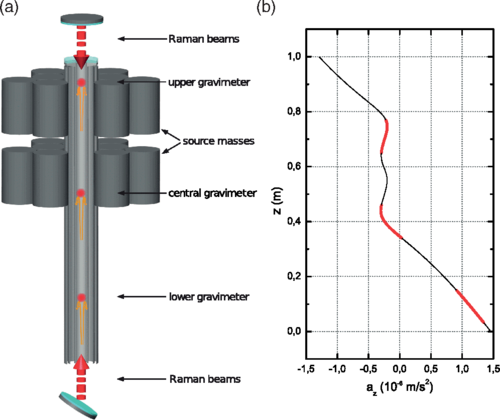Researchers conduct first direct measurement of gravity's curvature
(a) Scheme of the experiment. (b) Gravitational acceleration along the symmetry axis (az) produced by the source masses and the Earth’s gravity gradient. Credit: Phys. Rev. Lett. 114, 013001
A team of researchers working in Italy has successfully conducted an experiment to directly measure gravity's curvature for the first time. In their paper published in the journal Physical Review Letters, the team describes their work and note that what they have accomplished could lead to an improvement in G, the Newtonian constant of gravity.
Over many years, scientists have developed more sophisticated ways to measure gravity, one of the latest is to use atom interferometry—it enables distance measurement with very high precision and works by exploiting the quantum-mechanical wavelike nature of atoms. Up till now researchers have been able to measure the changes in gravity as altitude increases, for heights as little as a few feet, creating a gradient. In this new research the team has found a way to measure the change in gravity that is produced by a large mass. This change in the gradient is known as gravity's curvature.

There are no published comments.
New comment